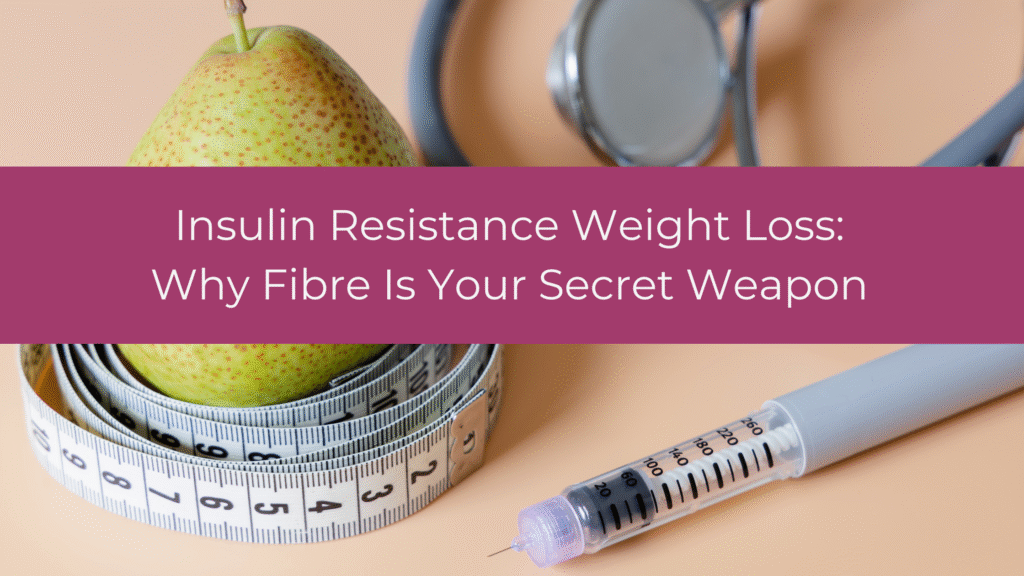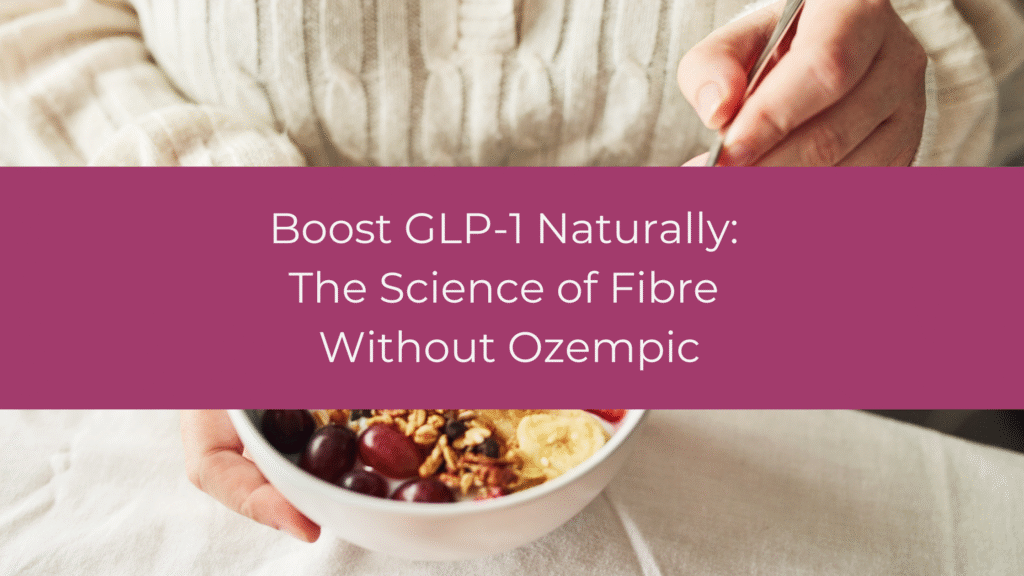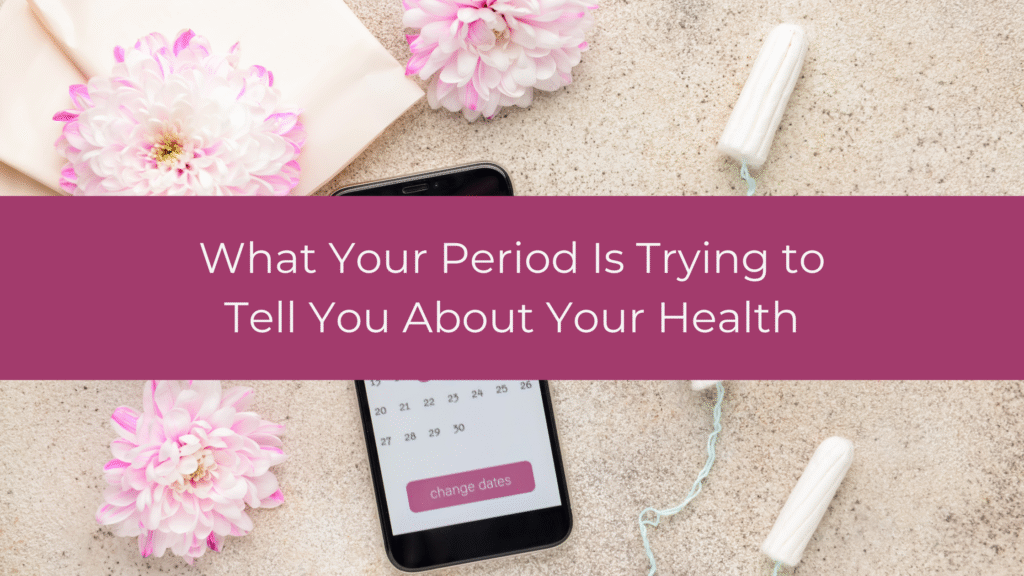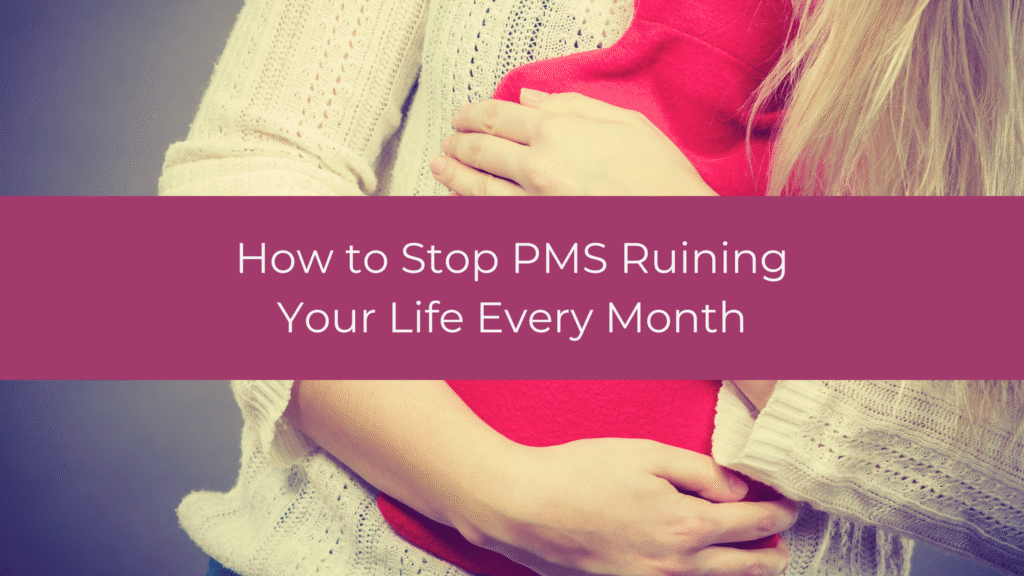Fibermaxxing for Women: The Natural Ozempic Alternative
If you’ve been on TikTok lately, you’ve probably seen it. Fibermaxxing. Everyone’s suddenly obsessed with their daily fibre intake like it’s the secret to life. And you know what? There’s actually something to it.
After 12 years working on yachts with unpredictable schedules and limited control over meals, I learned a crucial lesson: sustainable health comes from simple, practical strategies, not expensive quick fixes. As a Nutritional Therapist, I’ve seen how complex protocols fail where straightforward, science-backed approaches succeed.
Fibermaxxing isn’t just another internet trend. In fact, it’s a genuinely practical way to support natural weight loss without fighting against your body. Want to see how this could fit into your life? Let’s chat about it.
What Is Fibermaxxing?
Fibermaxxing blew up on TikTok around July 2025. The concept is simple: eat more fibre. A lot more. We’re talking 25 to 35 grams daily, which is way more than most women currently manage.
But why now? Because everyone’s talking about Ozempic. As GLP-1 drugs dominated the headlines with their dramatic weight loss results, people started wondering if there was a natural way to get similar benefits. Without the injections, side effects, or spending £1,000 every month.
Turns out, fibre does something pretty incredible. When you eat enough of it, especially fermentable fibre, your body naturally produces more GLP-1. That’s the same hormone Ozempic mimics. Same appetite control, same blood sugar benefits. No prescription needed.
Women are loving this because it actually makes sense. Plus, it’s affordable, sustainable, and tackles multiple issues at once: weight, gut health, hormones, energy. Not just a number on the scales.
The Ozempic Connection: How Fibre Mimics GLP-1 Drugs
Right, let’s get into the science bit. Because once you understand this, fibermaxxing makes total sense.
GLP-1 is a hormone your gut produces naturally after you eat. It does three things: tells your brain you’re full, slows down how fast your stomach empties (so you stay satisfied longer), and helps keep your blood sugar steady. Ozempic is basically a synthetic version of this hormone that you inject weekly.
Here’s where fibre comes in. When you eat fermentable fibre, the good bacteria in your gut break it down. This fermentation process creates short-chain fatty acids, which then signal your gut cells to release GLP-1. Naturally.
So you get the appetite suppression and metabolism benefits without any injections. No nausea. No “Ozempic face.” No dependency on medication.
The main difference is speed. Ozempic works fast, usually within a week or two. Fibermaxxing is gentler. You’ll typically notice your appetite changing within two to four weeks, with steady weight loss happening over the next few months.
But here’s why fibermaxxing wins long-term: you’re not just artificially suppressing your appetite. Instead, you’re feeding your gut bacteria, balancing your hormones, reducing inflammation, and building habits that stick around after the trend dies down.
Why Fibermaxxing Is Perfect for Busy Women
Most weight loss advice assumes you’ve got endless time, a perfectly stocked kitchen, and zero stress. That’s not real life.
When I was working on yachts, I’d pull 14-hour shifts with barely any control over what I ate and definitely no time for complicated wellness routines. Fibermaxxing would’ve been perfect because it’s actually doable.
No doctor’s appointments for prescriptions. No weekly injection schedules. No spending nearly a grand every month on medication. Just smarter food choices that work with whatever routine you’ve already got.
It’s ideal if you’ve got a demanding job, irregular hours, or limited access to a proper kitchen. You can fibermax with basic meal prep, snacks you can grab on the go, and simple additions to whatever you’re already eating.
And the benefits go way beyond losing weight. More fibre means better gut health, which affects your hormones, energy, mood, even your skin. In other words, you’re not just getting smaller. You’re actually getting healthier.
Trying to decode what your body’s telling you can feel overwhelming. Book a free call and I’ll help you make sense of it all.
The Benefits of Fibermaxxing for Women
Beyond weight loss, fibermaxxing does a lot for women in their 20s, 30s, and 40s.
Your appetite becomes so much easier to manage. That fibre triggers natural GLP-1, which genuinely reduces hunger and cravings. You’re not forcing yourself through hunger. Your body actually feels satisfied.
Blood sugar stays more stable. Fibre slows down how quickly glucose gets absorbed, so you avoid those spikes and crashes that leave you exhausted and craving sugar. This is massive if you’ve got PCOS or insulin resistance.
Your gut health improves dramatically. Fibre feeds the good bacteria, which means better digestion, less bloating (when you do it right), and a healthier, more diverse microbiome. Plus, your gut health affects everything from immunity to mental health.
Hormones start balancing out. Fibre helps your body process and get rid of excess oestrogen. This can ease PMS, support regular cycles, and improve how you feel hormonally overall.
Inflammation goes down. Those short-chain fatty acids from fibre fermentation are seriously anti-inflammatory. As a result, less chronic inflammation means less weight gain, fatigue, and hormonal chaos.
How to Start Fibermaxxing (Without the Bloat)
Here’s what most fibermaxxing content doesn’t tell you: if you ramp up your fibre too fast, you’ll be bloated, gassy, and uncomfortable. This is why so many people quit high-fibre diets.
Go slow. If you’re eating around 10 to 15 grams of fibre daily right now (which is average for most women), don’t jump straight to 35 grams. Instead, add about 5 grams every three to four days. Your gut needs time to adjust.
Proper hydration supports digestive health. Aim to drink water between meals, not during, to support optimal enzyme function and digestion.
Spread your fibre intake across all your meals and snacks. Don’t load up all your fibre in one or two meals, as this can cause gas and bloating. Instead, aim for a consistent intake throughout the day.
Mix up your fibre sources. You need both types: soluble fibre (dissolves in water, feeds gut bacteria) and insoluble fibre (adds bulk, keeps things moving).
Good soluble fibre sources: oats, chia seeds, flaxseeds, beans, lentils, berries, apples, sweet potatoes.
Good insoluble fibre sources: vegetables (especially leafy greens, broccoli, cauliflower), whole grains, nuts, seeds.
Timing matters when you’re busy. Include some fibre in each meal and snack to stay full and maintain steady energy during your busiest hours. This stops the afternoon energy crash and late-night snack attacks.
If you’re yacht crew or have limited kitchen access: focus on portable, shelf-stable stuff like chia seeds, flaxseeds, oats, tinned beans, frozen veg. Minimal prep, easy to store.
Fibermaxxing Meal Ideas for Busy Women
Breakfast: Overnight oats with chia seeds, berries, and ground flaxseed. That’s 12 grams of fibre. Alternatively, blend up a smoothie with spinach, frozen berries, half an avocado, chia seeds, and coconut water for 10 grams.
Lunch: Lentil and veg soup with a slice of sourdough toast gets you 14 grams. Or build a massive salad with mixed greens, chickpeas, roasted veg, pumpkin seeds, and olive oil dressing for 11 grams.
Dinner: Black bean and sweet potato tacos loaded with vegetables. 13 grams. Alternatively, try baked salmon with quinoa and roasted broccoli and Brussels sprouts for 10 grams.
Snacks: Apple slices with almond butter (6 grams). Hummus with carrot and cucumber sticks (5 grams). Chia pudding made with coconut milk and berries (8 grams).
Quick options for yacht crew: Chuck tinned beans into any meal. Microwave frozen veg with olive oil and seasoning. Individual oat packets with added chia seeds. Pre-portioned trail mix with nuts and dried fruit.
Fibermaxxing vs. Ozempic: The Honest Comparison
Let’s talk about the big question. How does fibermaxxing actually stack up against Ozempic?
Cost: Fibermaxxing is basically free. Just smarter grocery shopping. In contrast, Ozempic costs £900 to £1,200 every month if you’re paying out of pocket.
Side effects: Fibermaxxing might give you some bloating if you increase too fast, but that goes away. Ozempic commonly causes nausea, vomiting, diarrhoea, constipation, and sometimes that “Ozempic face” thing where you lose facial volume, experiencing muscle and fat reduction that can make you look gaunt.
Sustainability: Fibermaxxing builds healthy habits for life. In contrast, Ozempic needs ongoing injections, and loads of people gain the weight back fast when they stop.
How it works: Fibermaxxing gets your body to make its own GLP-1 naturally through better gut health. Ozempic pumps in synthetic GLP-1 that overrides what your body does naturally.
Timeline: Ozempic works fast, one to two weeks. Fibermaxxing takes a bit longer, two to four weeks to notice changes, with steady progress over months.
Who can do it: Anyone can fibermax. However, Ozempic needs a prescription and is technically meant for type 2 diabetes or obesity (BMI over 30).
Common Fibermaxxing Mistakes (And How to Avoid Them)
Going too fast is the biggest mistake. Your gut bacteria need time to adapt. Therefore, increase gradually or you’ll be miserable with bloating and gas.
Proper hydration supports digestive health. Aim to drink water between meals, not during, to support optimal enzyme function and digestion.
Only taking fibre supplements misses the whole point. Real food gives you vitamins, minerals, antioxidants, and different types of fibre that supplements can’t match. Instead, use supplements to top up, not as your main source.
Ignoring the different fibre types throws your gut off balance. You need both soluble and insoluble for everything to work properly.
Expecting instant results will disappoint you. Fibermaxxing is about steady, sustainable progress. Instead, focus on how you feel, not just what the scales say.
Is Fibermaxxing Right for You?
Fibermaxxing works brilliantly for women dealing with weight loss resistance, PCOS, insulin resistance, hormone imbalances, or chronic inflammation. It’s also perfect if you want a natural, sustainable approach to weight management without medication.
But if you’ve got IBS, Crohn’s, ulcerative colitis, or other digestive issues, talk to a healthcare professional before massively upping your fibre. Some conditions need a modified approach.
Timeline-wise: expect to notice your appetite changing within two to four weeks. Actual weight loss usually kicks in around four to eight weeks, with continued progress as you stick with it.
This isn’t a quick fix. Instead, it’s a lifestyle shift that works with your body instead of against it.
Ready to Transform Your Health Naturally?
Fibermaxxing isn’t just another viral trend that’ll disappear in a month. It’s a science-backed way to manage your weight naturally by working with your body’s existing systems. No prescriptions. No expensive drugs. No unsustainable restrictions.
Want to create a fibermaxxing plan that actually fits your life? Book your free 30-minute consultation and let’s build something sustainable together.
Your body already knows how to thrive. Sometimes it just needs the right fuel.
Disclaimer: This article is for informational purposes only and is not intended as medical advice. Always consult with a healthcare professional before making significant changes to your diet or health routine.






